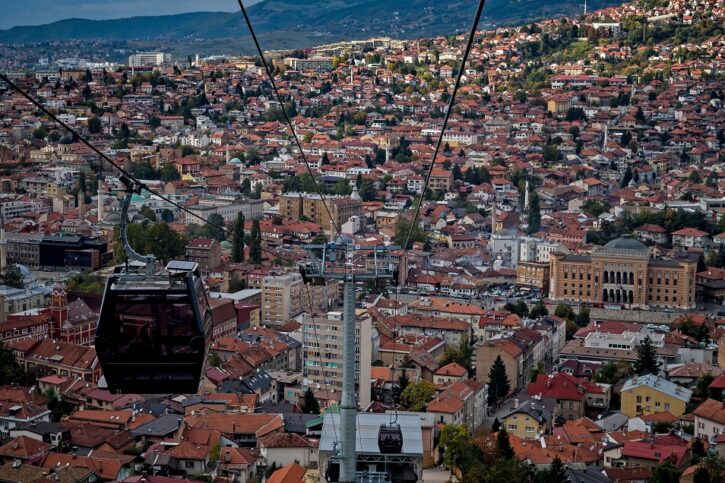
April 6 is the most important date in the history of Bosnia’s capital, as on that day, in 1945, Sarajevo was liberated from the Nazi occupation.
But on the same day in 1992, the city was under attack again and needed to be liberated one more time.
The longest siege of a capital in modern history started on April 5, 1992, and lasted until February 29, 1996. It took the lives of 11,541 of its residents, including 1,601 children.
The constant shelling of the city resulted in the destruction of residential buildings and the city’s infrastructure. Among the targets were also hospitals, the TV building and the TV tower, trams, hotels, university buildings, cemeteries, the City Hall, religious objects, the Parliament building, and others structures.
A day after the Bosnian Serb forces laid siege to the city, on April 6, the European Economic Community recognised the Republic of Bosnia and Herzegovina as an independent state.
However, as the flag with the Bosnian lily was standing tall in front of the UN Headquarters in New York, Bosnian Serb forces shelled Sarajevo and starved the city for 1,425 days, leaving it without electricity, heating, water, medications and other basic needs.
Against all odds, the city survived and rose from ashes again after the war, keeping its character of a multiethnic and multireligious city.
Because of all of those events, city authorities declared in 2006 April 6 as the Day of the City of Sarajevo.
Along with other officials, the Bosniak member of the tripartite Presidency Sefik Dzaferovic laid on Saturday flowers at the Eternal Flame, a monument dedicated to those who fought for the city’s freedom during WWII.
“On this day in 1945 Sarajevo was liberated from fascism, but fascists attacked it again from the surrounding mountains in 1992, and what followed was the systematic destruction of the city, a brutal attack and years-long siege,” Dzaferovic said.
But the city managed to defend itself, as did Bosnia, he added.
“Sarajevo managed to maintain its multiethnic spirit of a city that is open to all good-intentioned and peace-loving people,” Dzaferovic said.
The officials visited the military graveyard and the Monument for Children Killed during the Siege.
Sarajevo Mayor Abdulah Skaka organised a sit-down and served Bosnian coffee to citizens and tourists in Bascarsija, the Old Town.
“Sarajevo remains a city of diversity, but also a city in which everyone respects each other,” he said.
“We in Sarajevo do not live next to each other but with each other,” he added.




